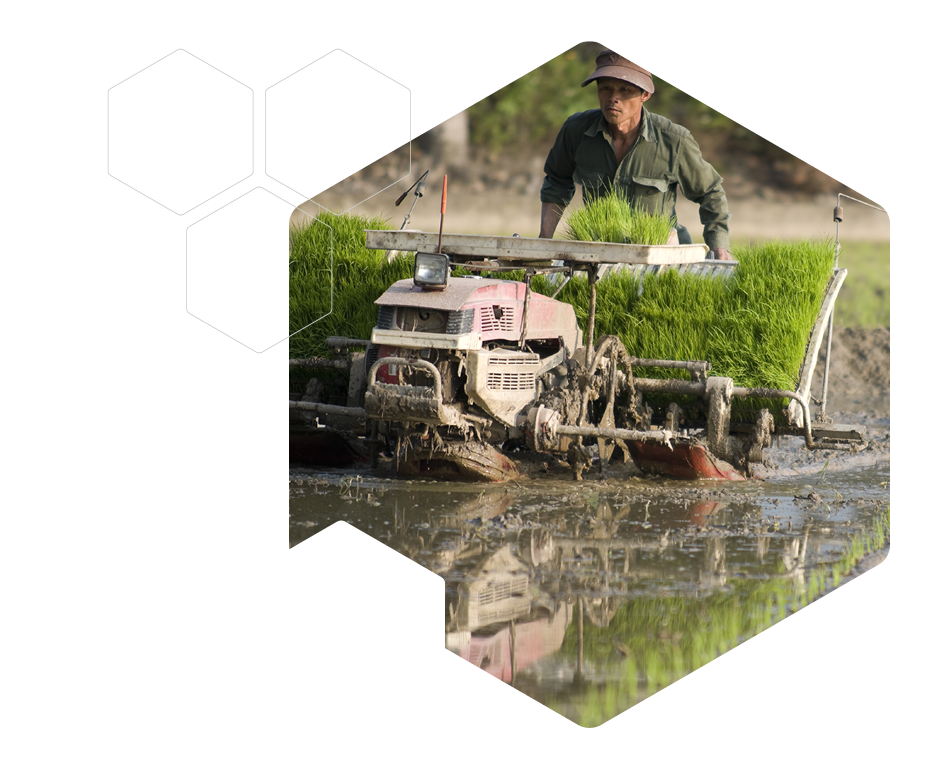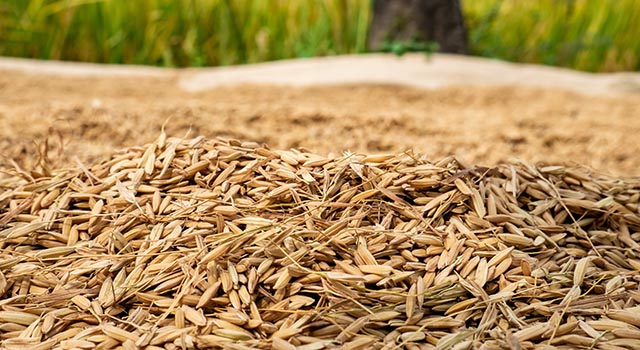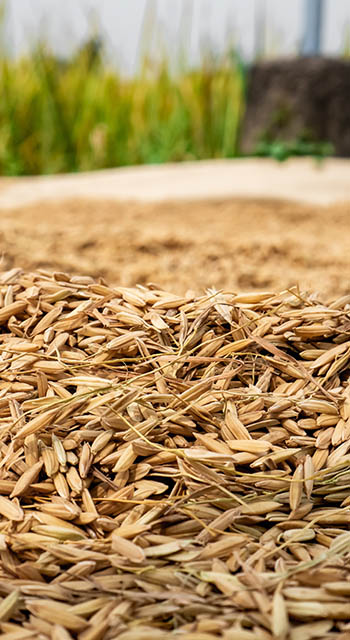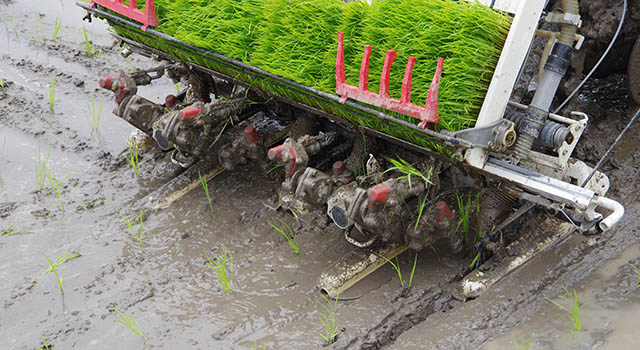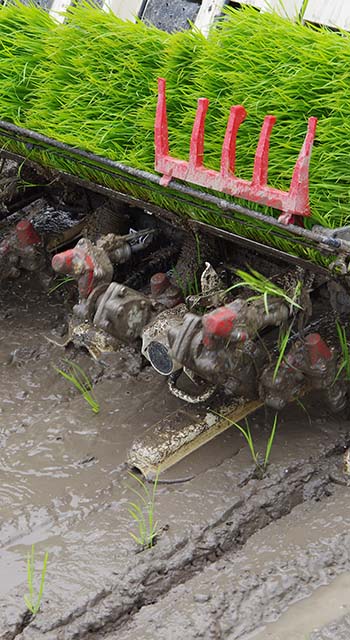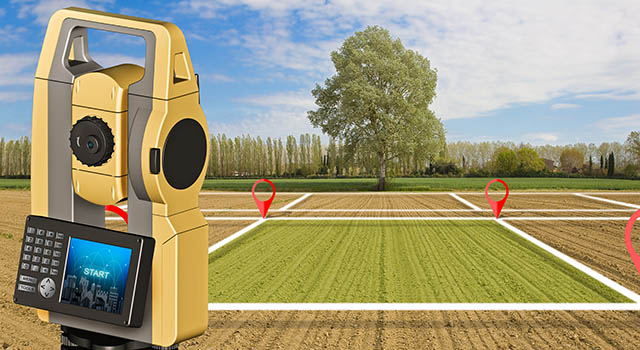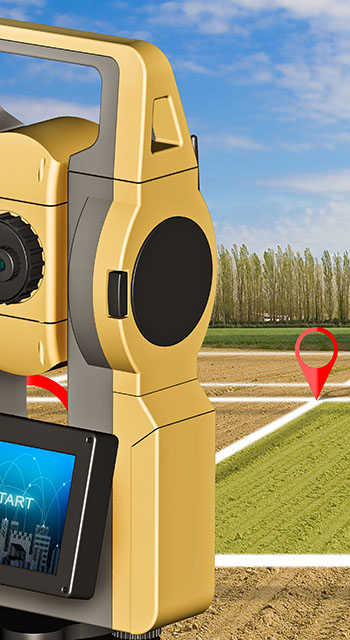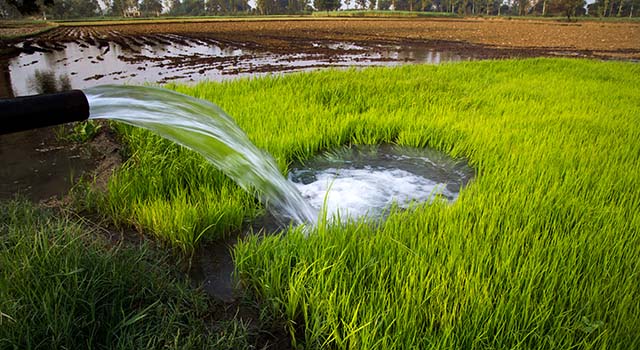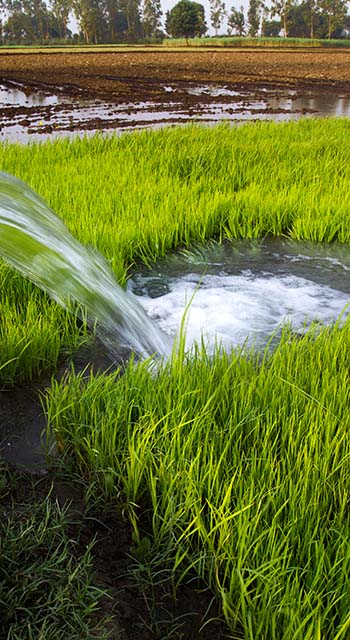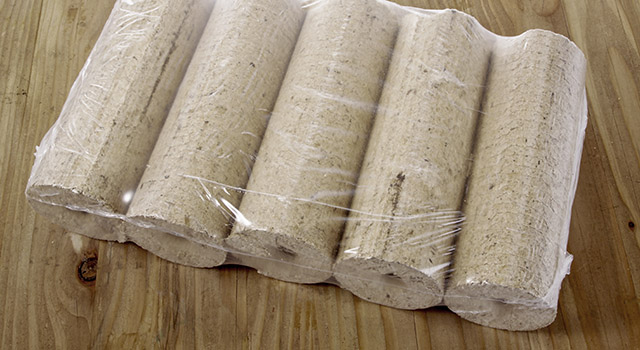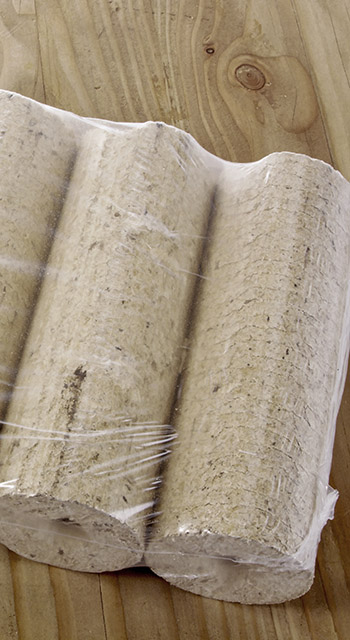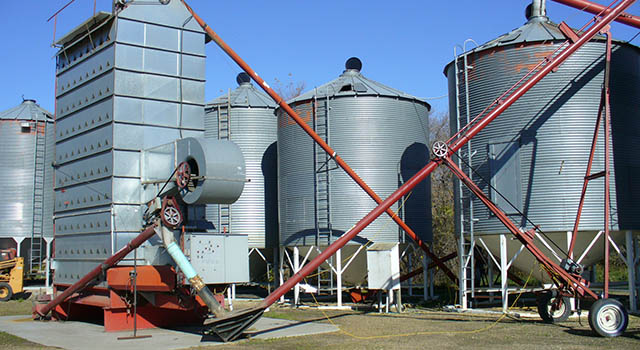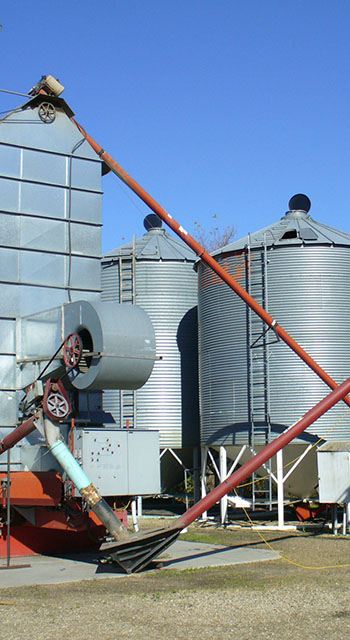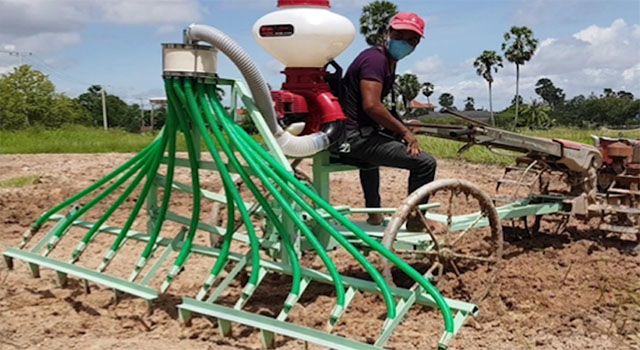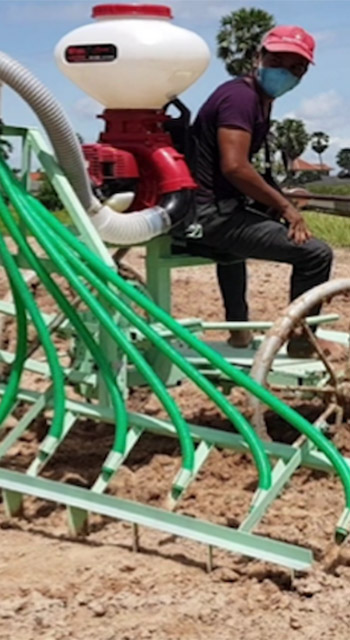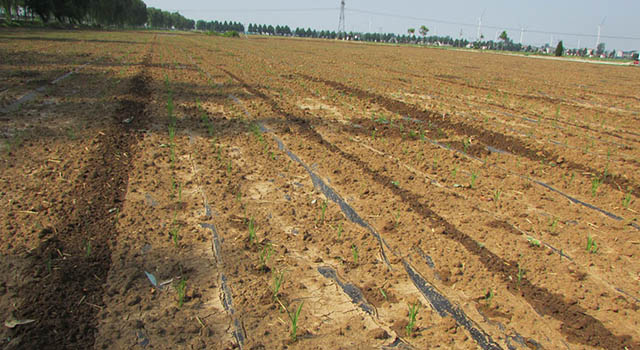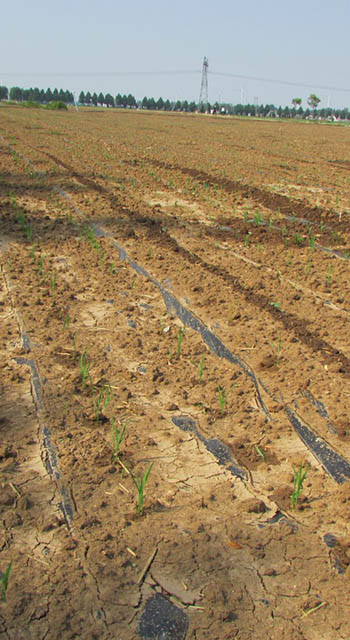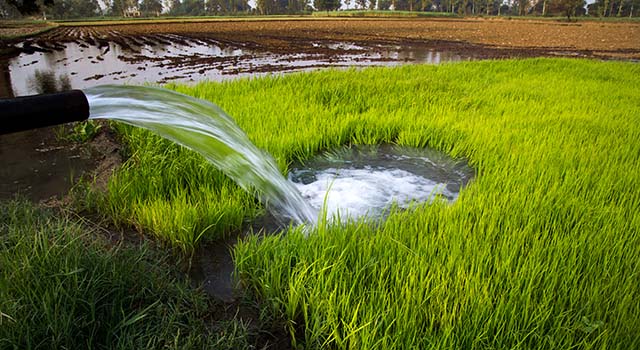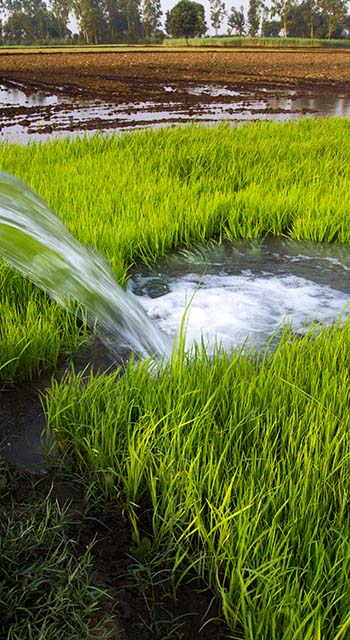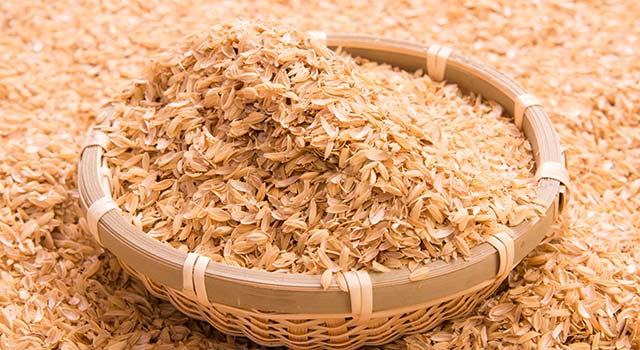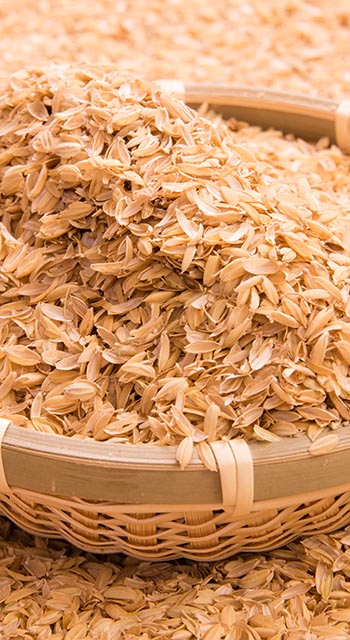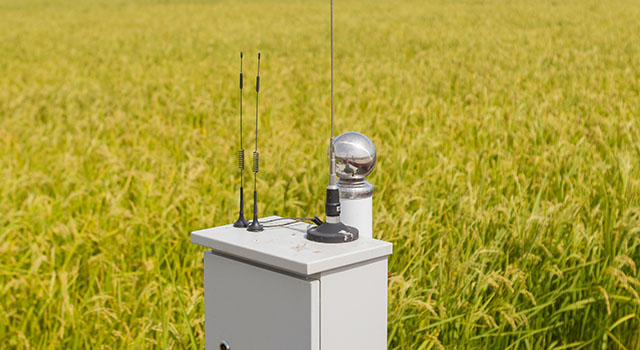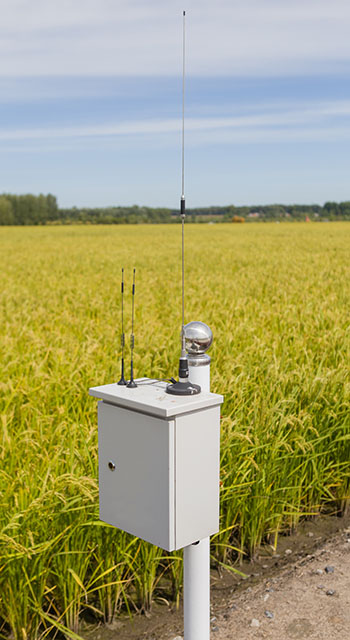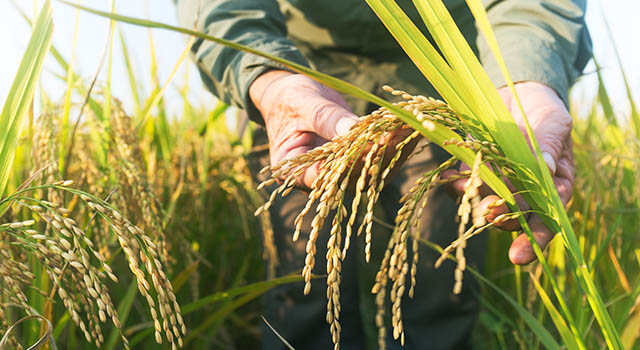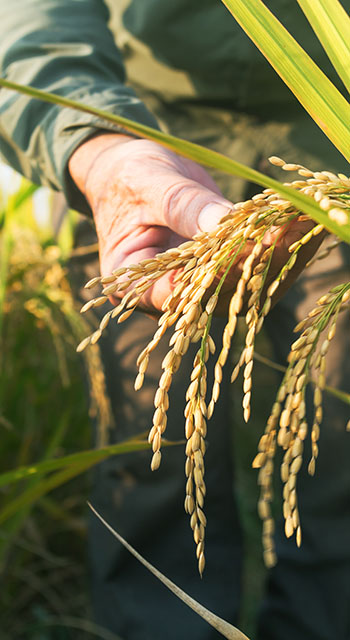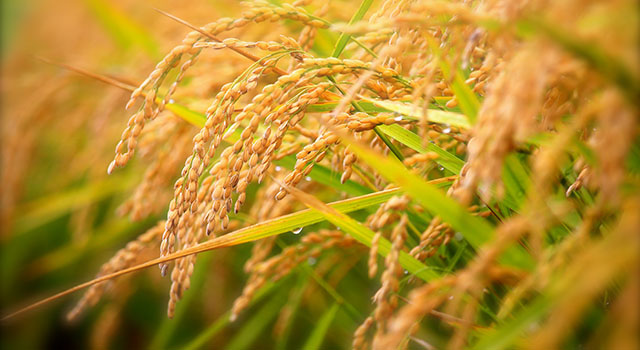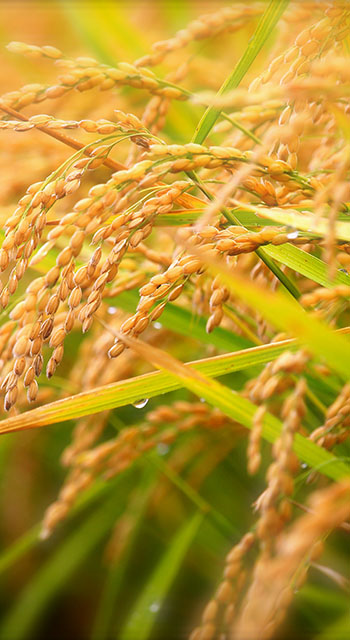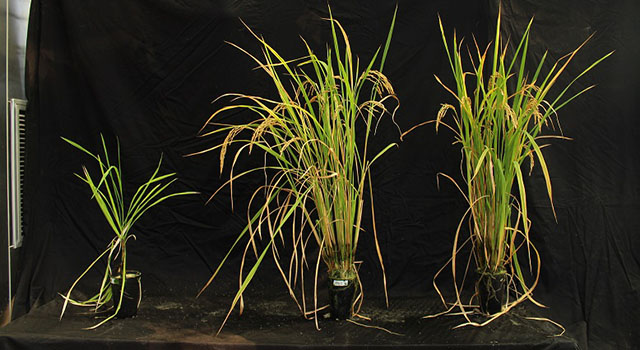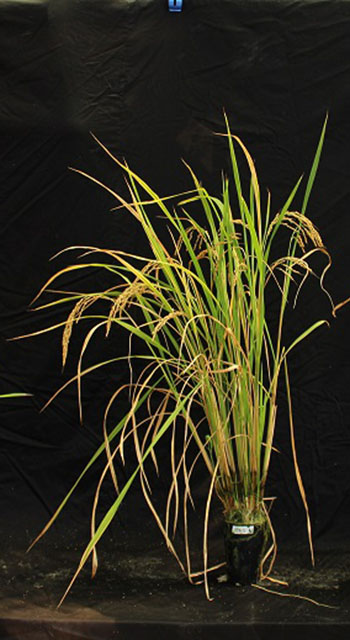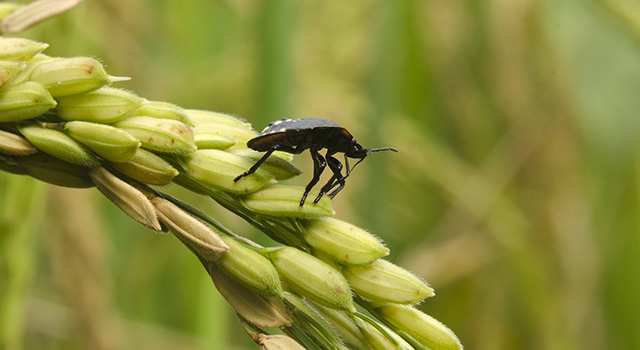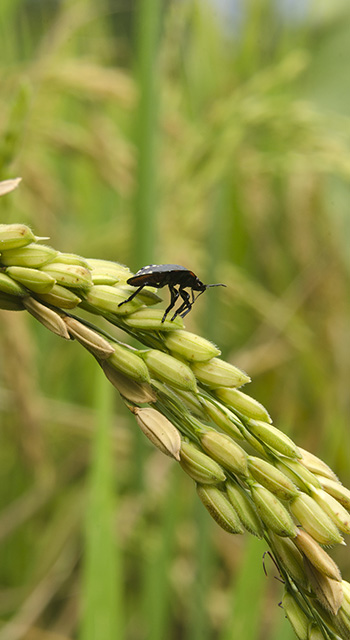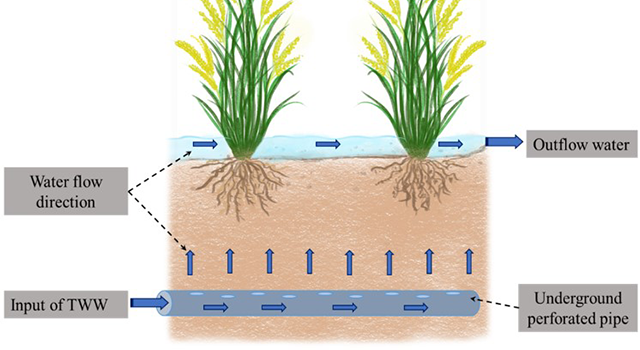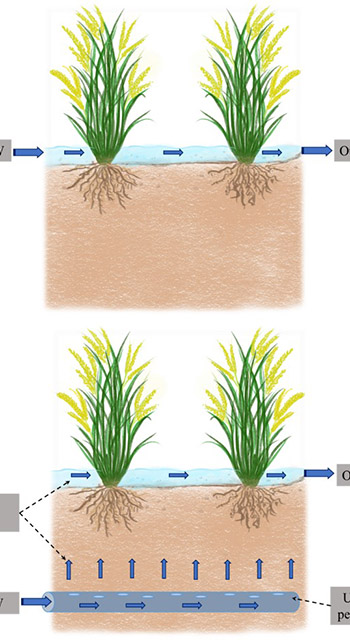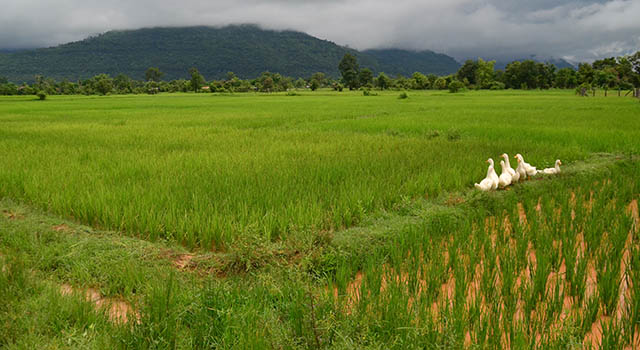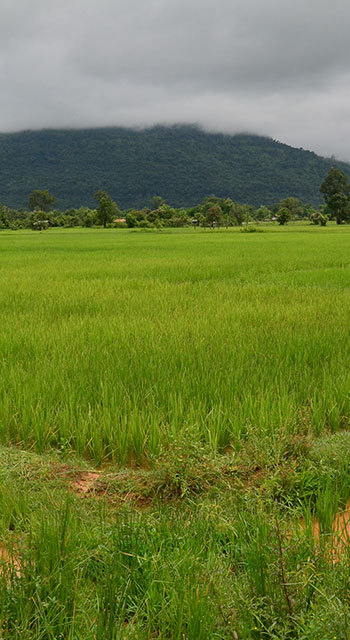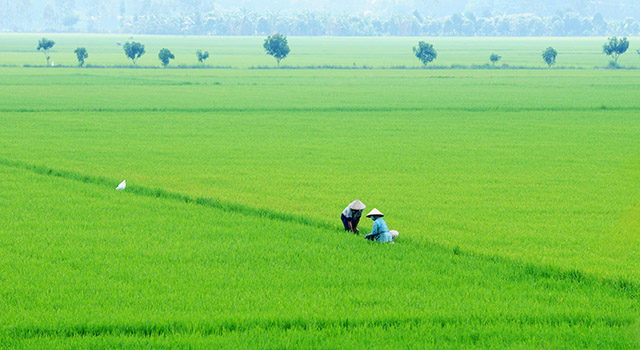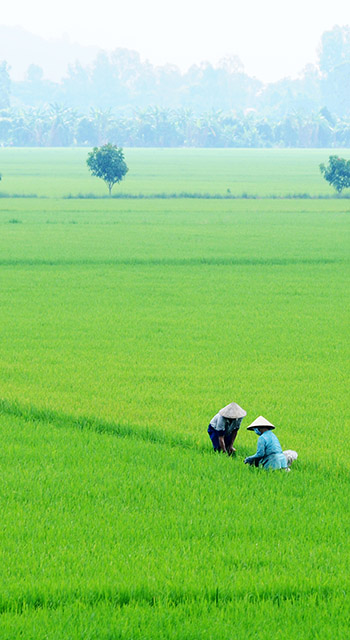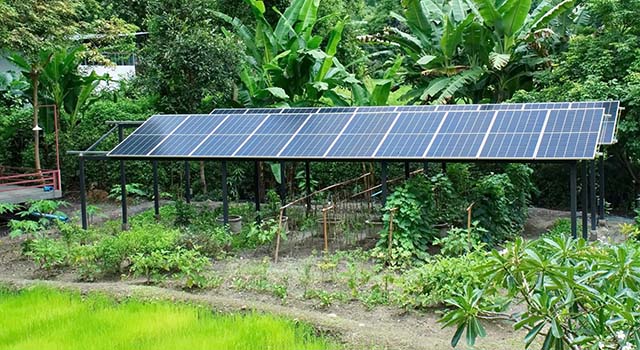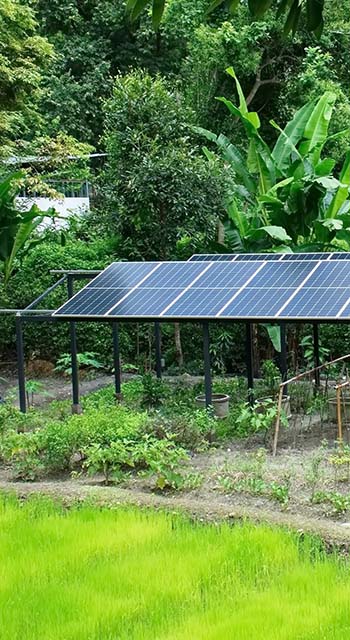Rice is the staple food of some 3.5 billion people, predominantly in Asia. Almost all rice is cultivated as wet rice in fields that are covered in water for most of the growing season. This also makes rice production one of the major GHG emitters, globally accounting for 10–12 percent of the world’s methane emissions.
Proven technologies
Frontier technologies
Horizon technologies
IPCC (2021).
IPCC (2023). Synthesis report (SYR) of the IPCC sixth assessment report (AR6): Summary for policymakers. Geneva: Intergovernmental Panel on Climate Change (IPCC). Available at: https://www.ipcc.ch/report/ar6/syr/
Ivanovich, C.C., et al. (2023). Future warming from global food consumption. Nature Climate Change, 13(3), 297–302.
IPCC (2022). Climate change 2022: Mitigation of climate change – Technical summary, Working Group III contribution to IPCC sixth assessment report. Cambridge, UK: Intergovernmental Panel on Climate Change (IPCC). Available at: https://www.ipcc.ch/report/sixth-assessment-report-working-group-3/
FAO (2023). Land use in agriculture by the numbers. Food and Agriculture Organization of the United Nations (FAO). Available at: http://www.fao.org/sustainability/news/detail/en/c/1274219/ [accessed May 2023].
World Bank (2023). Water in agriculture. World Bank. Available at: https://www.worldbank.org/en/topic/water-in-agriculture
Nawaz, A., et al. (2022). Increasing sustainability for rice production systems. Journal of Cereal Science, 103, 103400.
Sozzi, M., et al. (2018). Patent trends in agricultural engineering. Jelgava, Latvia: Engineering for rural development and University of Padova, Italy. Available at: https://www.tf.lbtu.lv/conference/proceedings2018/Papers/N329.pdf
EPO (2022). Space-borne sensing and green applications, Patent insight report. Munich, Germany: European Patent Office. Available at: https://link.epo.org/web/Space-borne%20sensing%20and%20green%20applications%20report.pdf
Caner, D., J. Claes, D. De Clercq and M. Taksyak (2023). Needle in a haystack: Patents that inspire agricultural innovation. McKinsey & Company. Available at: https://www.mckinsey.com/industries/agriculture/our-insights/needle-in-a-haystack-patents-that-inspire-agricultural-innovation [accessed October 2023].
Trappey, A.J.C.,
Chapelier, E., Hanaf, A. and Gourragne A. (2020). Patent mapping analysis in the field of agricultural robotics. Global Organization For Agricultural Robotics (GOFAR). Available at: https://www.agricultural-robotics.com/news/patent-mapping-analysis-in-the-field-of-agricultural-robotics [accessed October 2023].
Caprarulo, V.,
Fatimi, A. (2021). The use of seaweeds in the formulation of feeds for livestock: Patent analysis. In
IP Australia (2023). Patent analytics on low emission technologies. Intellectual Property Office of Australia. Available at: https://www.ipaustralia.gov.au/tools-and-research/professional-resources/data-research-and-reports/publications-and-reports/2022/11/30/03/16/patent-analytics-on-low-emission-technologies [accessed October 2022].
ESA (2023). A closer look at the latest earth observation services industry trends. The European Space Agency (ESA). Available at: https://space-economy.esa.int/article/72/a-closer-look-at-the-latest-earth-observation-services-industry-trends [accessed October 2023].
Pixalytics (2023). How many earth observation satellites orbiting in 2023? Pixalytics. Available at: https://www.pixalytics.com/earth-observation-satellites-2023/ [accessed October 2023].
EPO (2022). Space-borne sensing and green applications. Patent insight report, Munich, Germany: European Patent Office. Available at: https://link.epo.org/web/Space-borne%20sensing%20and%20green%20applications%20report.pdf
CPI (2022).
CPI (2023).
CPI (2022).
Berkeley (2023). Berkeley carbon trading project: Voluntary registry offsets database. Center for Environmental Public Policy (CEPP) and Goldman School of Public Policy, University of California, Berkeley. Available at: https://gspp.berkeley.edu/research-and-impact/centers/cepp/projects/berkeley-carbon-trading-project/offsets-database [accessed October 2023].
CPI (2022).
CPI (2020).
CPI (2022).
AgFunder (2022).
Bashi, Z.,
McKinsey (2022).
BCG (2022).
Climate ADAPT (2023). Precision Agriculture. The European Climate Adaptation Platform Climate-ADAPT. Available at: https://climate-adapt.eea.europa.eu/en/metadata/adaptation-options/precision-agriculture [accessed October 2023].
EDF (2023). ‘Precision Agriculture Loan Act’ unlocks new financing for climate solutions. Environmental Defense Fund (EDF). Available at: https://www.edf.org/media/precision-agriculture-loan-act-unlocks-new-financing-climate-solutions [accessed October 2023].
MarketsandMarkets (2023). Precision farming market size, share, industry report, revenue trends and growth drivers. MarketsandMarkets. Available at: https://www.marketsandmarkets.com/Market-Reports/precision-farming-market-1243.html [accessed October 2023].33
AgFunder (2022).
World Bank (2023). World bank loan will support reducing methane, saving water in Hunan’s rice paddies. World Bank Group. Available at: https://www.worldbank.org/en/news/press-release/2023/05/31/world-bank-loan-will-support-reducing-methane-saving-water-in-hunan-s-rice-paddies [accessed October 2023].
IFAD (2023). New IFAD initiative will help reduce global warming by lowering methane emissions from small-scale farming. International Fund for Agricultural Development (IFAD). Available at: https://www.ifad.org/en/web/latest/-/new-ifad-initiative-will-help-reduce-global-warming-by-lowering-methane-emissions-from-small-scale-farming
Berkeley (2023). Berkeley carbon trading project. Voluntary registry offsets database. Center for Environmental Public Policy (CEPP), Goldman School of Public Policy, University of California, Berkeley. Available at: https://gspp.berkeley.edu/research-and-impact/centers/cepp/projects/berkeley-carbon-trading-project/offsets-database [accessed October 2023].
Precedence Research (2023). Regenerative agriculture market. Precedence Research. Available at: https://www.precedenceresearch.com/regenerative-agriculture-market [accessed October 2023].
PepsiCo (2023). Pepsico issues new $1.25 billion 10-year green bond as company accelerates pep+ transformation. PepsiCo. Available at: https://www.pepsico.com/our-stories/press-release/pepsico-issues-new-125-billion-10-year-green-bond-as-company-accelerates-pep-tra07202022 [accessed October 2023].
Danone (2020). Danone North America and the National Fish and Wildlife Foundation join forces. Danone North America. Available at: https://www.danonenorthamerica.com/news/danone-north-america-and-the-national-fish-and-wildlife-foundation-join-forces-to-leverage-3-million-in-federal-funding-for-shared-commitment-to-regenerative-agriculture/ [accessed October 2023].
European Commission (2021). Evaluation of the impact of the Common Agricultural Policy on climate change and greenhouse gas emissions.
USDA (2022).
Climatewatch (2023). Climatewatch. Available at: https://www.climatewatchdata.org/ [accessed May 2023].
Havlík, P.,
FAO (2019).
FAO (2016).
FAO (2016).
FAO (2016).
CCAC (2023). Enteric fermentation. Climate & Clean Air Coalition (CCAC) and United Nations Environment Programme (UNEP). Available at: https://www.ccacoalition.org/eN/Activity/enteric-fermentation [accessed May 2023].
IPCC (2022).
FAO (2016).
FAO (2016).
Pasture.io (2023). Scientists are breeding climate-friendly cows & soon they’ll be on your farm. Pasture.io. Available at: https://pasture.io/dairy-industry/breeding-climate-friendly-cows [accessed July 2023].
Cargill (2023). How feed impacts your farm’s methane output. Cargill. Available at: http://dx.doi.org/ [accessed June 2023].
FAO (2019).
FAO (2017).
OECD and FAO (2023).
OECD and FAO (2023).
UN (2023). Peace, dignity and equality on a heathy planet. United Nations (UN). Available at: https://www.un.org/en/global-issues/population [accessed May 2023].
Corichi, M. (2021). Eight-in-ten Indians limit meat in their diets, and four-in-ten consider themselves vegetarian. Pew Research Center. Available at: https://www.pewresearch.org/short-reads/2021/07/08/eight-in-ten-indians-limit-meat-in-their-diets-and-four-in-ten-consider-themselves-vegetarian/ [accessed August 2023].
Leveau, M. (2022). The FoodTech Innovation ‘blind spots’ of the last decade – Going beyond the hype – Part 1. Forward Fooding. Available at: https://forwardfooding.com/blog/foodtech-trends-and-insights/the-foodtech-innovation-blind-spots-go-beyond-the-hype-part-1/ [accessed 2023 June].
Leveau, M. (2022). The FoodTech Innovation ‘blind spots’ of the last decade – Going beyond the hype - Part 1. Forward Fooding. Available at: https://forwardfooding.com/blog/foodtech-trends-and-insights/the-foodtech-innovation-blind-spots-go-beyond-the-hype-part-1/ [accessed 2023 June].
Protein Directory (2023). Protein Directory – The largest alt protein database globally. Available at: https://proteindirectory.com/ [accessed June 2023].
Leveau, M. (2022). The FoodTech Innovation ‘blind spots’ of the last decade - Going beyond the hype - Part 1. Forward Fooding. Available at: https://forwardfooding.com/blog/foodtech-trends-and-insights/the-foodtech-innovation-blind-spots-go-beyond-the-hype-part-1/ [accessed 2023 June].
Crownhart, C. (2023). Here’s what we know about lab-grown meat and climate change.
Paradisi, L. (2021). Understanding the future of protein. Forward Fooding. Available at: https://forwardfooding.com/blog/foodtech-trends-and-insights/understanding-the-future-of-protein/ [accessed July 2023].
FAO (2019).
Engler, J.-O. and H. von Wehrden (2018). Global assessment of the non-equilibrium theory of rangelands: Revisited and refined.
Hardin, G. (1968). The tragedy of the commons.
Ross, E.B. (1998).
Helldén, U. (1991). Desertification – Time for an assessment.
Fairhead, J. and M. Leach (1996). Colonial science & its relics in West Africa. In M. Leach and R. Mearns (eds)
Fairhead, J. and M. Leach (1996).
Oksen, P. (2001).
Ellis, J.E., M.B. Coughenour and D.M. Swift (1993). Climate variability, ecosystem stability, and the implications for range and livestock development. In R.H. Behnke, I. Scoones and C. Kerven (eds),
Smith, S. (2023). 10 things you should do to get started with regenerative grazing. Noble Research Institute. Available at: https://www.noble.org/regenerative-agriculture/10-things-you-should-do-to-get-started-with-regenerative-grazing/ [accessed July 2023].
FAO (2017).
CCAC (2023). Uruguay reduces livestock emissions while increasing productivity in a ccac-supported pilot project. Climate & Clean Air Coalition (CCAC) and United Nations Environment Programme (UNEP). Available at: https://www.ccacoalition.org/news/uruguay-reduces-livestock-emissions-while-increasing-productivity-ccac-supported-pilot-project [accessed October 2023].
CCAC (2023). Enteric fermentation. Climate & Clean Air Coalition (CCAC). United Nations Environment Programme (UNEP). Available at: https://www.ccacoalition.org/eN/Activity/enteric-fermentation [accessed May 2023].
FAO (2023). Global Livestock Environmental Assessment Model (GLEAM). Food and Agriculture Organization of the United Nations (FAO). Available at: https://www.fao.org/gleam/en/ [accessed May 2023].
O’Sullivan, A.,
UNFCCC (2023). Land use, land-use change and forestry (LULUCF). United Nations Framework Convention on Climate Change (UNFCCC). Available at: https://unfccc.int/topics/land-use/workstreams/land-use--land-use-change-and-forestry-lulucf [accessed July 2023].
Ritchie, H., F. Spooner and M. Roser (2021). Deforestation and forest loss. OurWorldInData.org. Available at: https://ourworldindata.org/forests-and-deforestation [accessed August 2023].
Ritchie, H. (2021). Cutting down forests: What are the drivers of deforestation? OurWorldinData.org. Available at: https://ourworldindata.org/what-are-drivers-deforestation [accessed August 2023].
Geist, H.J. and E.F. Lambin (2002). Proximate causes and underlying driving forces of tropical deforestation: Tropical forests are disappearing as the result of many pressures, both local and regional, acting in various combinations in different geographical locations.
Ritchie, H. (2021). Cutting down forests: What are the drivers of deforestation? OurWorldinData.org. Available at: https://ourworldindata.org/what-are-drivers-deforestation [accessed August 2023].
Ritchie, H., F. Spooner, and M. Roser (2021). Deforestation and forest loss. OurWorldInData.org. Available at: https://ourworldindata.org/forests-and-deforestation [accessed August 2023].
Ritchie, H., F. Spooner, and M. Roser (2021). Deforestation and forest loss. OurWorldInData.org. Available at: https://ourworldindata.org/forests-and-deforestation [accessed August 2023].
UNFCCC (2023). Land use, land-use change and forestry (LULUCF). United Nations Framework Convention on Climate Change (UNFCCC). Available at: https://unfccc.int/topics/land-use/workstreams/land-use--land-use-change-and-forestry-lulucf [accessed August 2023].
World Bank (2023). Eight Amazonian countries with the power to save the planet. The World Bank. Available at: https://www.worldbank.org/en/news/feature/2023/07/05/ocho-paises-de-la-amazonia-con-el-poder-de-salvar-el-planeta-america-latina [accessed July 2023].
IPCC (2021).
Ritchie, H., F. Spooner, and M. Roser (2021). Deforestation and forest loss. OurWorldInData.org. Available at: https://ourworldindata.org/forests-and-deforestation [accessed August 2023].
Bossio, D.A.,
Hicks Pries, C.E.,
EEA (2022). Briefing: Soil carbon. European Environment Agency (EEA). Available at: https://www.eea.europa.eu/publications/soil-carbon [accessed June 2023].
Hawkins, H.-J.,
Hicks Pries, C.E.,
MIT (2023). Soil-based carbon sequestration. Massachusetts Institute of Technology (MIT). Available at: https://climate.mit.edu/explainers/soil-based-carbon-sequestration [accessed June 2023].
IPCC (2021). Working Group I sixth assessment report: The physical science basis. Full report. Geneva: Intergovernmental Panel on Climate Change (IPCC). Available at: https://www.ipcc.ch/report/ar6/wg1/#SPM
Bossio, D.A.,
4 per 1000 (2023). The international “4 per 1000” initiative – Soils for food security and climate. Agricultural Research Centre for International Development (CIRAD). Available at: https://4p1000.org/?lang=en [accessed June 2023].
Bossio, D.A.,
Ellis, J. (2023). Reversing agriculture’s emissions with carbon-fixing soil inputs. Cleantech Group. Available at: https://www.cleantech.com/reversing-agricultures-emissions-with-carbon-fixing-soil-inputs/ [accessed July 2022].
Spears, S. (2018). What is biochar? Regeneration International. Available at: https://regenerationinternational.org/2018/05/16/what-is-biochar/ [accessed June 2023].
Baker, J.C. and K.E. Saxton (2007). The ‘what’ and ‘why’ of no-tillage farming. In C.J. Baker and K.E. Saxton (eds),
Powlson, D.S.,
Rainbow, R. and R. Derpsch (2011). Advances in no-till farming technologies and soil compaction management in rainfed farming systems. In P. Tow, et al. (eds),
FAO (2021). A step-by-step approach toward a gradual adoption of the full conservation agriculture technology: An example from Timor-Leste.
Rainbow, R. and R. Derpsch (2011). Advances in no-till farming technologies and soil compaction management in rainfed farming systems. In P. Tow, et al., eds.,
Rainbow, R. and R. Derpsch (2011). Advances in no-till farming technologies and soil compaction management in rainfed farming systems. In P. Tow, et al., eds.,
Colbach, N. and S. Cordeau (2022). Are no-till herbicide-free systems possible? A simulation study.
Hanley, S. (2022). Agrivoltaics – Solar panels & tomatoes may be perfect for each other. Cleantechnica. Available at: https://cleantechnica.com/2022/12/01/agrivoltaics-solar-panels-tomatoes-may-be-perfect-for-each-other/ [accessed July 2023].
Casey, T. (2023). More bad news for fossil fuels: Rooftop solar meets agrivoltaics. Cleantechnica. Available at: https://cleantechnica.com/2023/04/07/more-bad-news-for-fossil-fuels-rooftop-solar-meets-agrivoltaics/ [accessed July 2023].
FAO (2022).
IRRI (2023). Manual transplanting. International Rice Research Institute (IRRI). Available at: http://www.knowledgebank.irri.org/training/fact-sheets/crop-establishment/manual-transplanting#:~:text=Why%20transplant%20rice%3F,and%20has%20variable%20water%20levels. [accessed July 2023].
IRRI (2019). Machine transplanting. International Rice Research Institute (IRRI). Available at: https://ghgmitigation.irri.org/mitigation-technologies/machine-transplanting [accessed July 2023].
Linquist, B.,
Umali-Deininger, D. (2022).
Kurnik, J. and K. Devine (2022). Innovation in reducing methane emissions from the food sector: Side of rice, hold the methane. World Wildlife Fund. Available at: https://www.worldwildlife.org/blogs/sustainability-works/posts/innovation-in-reducing-methane-emissions-from-the-food-sector-side-of-rice-hold-the-methane [accessed July 2023].
WRI (2023). Our world in data: Emissions by sector. World Reesources Institute (WRI). Available at: https://ourworldindata.org/emissions-by-sector [accessed June 2023].
Kurnik, J. and K. Devine (2022). Innovation in reducing methane emissions from the food sector: Side of rice, hold the methane. World Wildlife Fund. Available at: https://www.worldwildlife.org/blogs/sustainability-works/posts/innovation-in-reducing-methane-emissions-from-the-food-sector-side-of-rice-hold-the-methane [accessed July 2023].
Umali-Deininger, D. (2022).
Zhijiang, X. (2023). Chinese rice farming trials cut methane emissions. China Dialogue. Available at: https://chinadialogue.net/en/food/chinas-rice-farming-trials-cut-methane-emissions-and-increase-yields/ [accessed July 2023].
Xiaodan, Y. (2022). Rice can also reduce carbon emissions! A low-carbon experiment in the field: How to build a closed loop of technology, cost, and carbon trading? Daily Economic News newspaper. Available at: https://www.nbd.com.cN/Articles/2022-10-21/2505684.html [accessed July 2023].
Arunrat, N.,
Li, J., Y. Xin and L. Yuan (2009).
Cornell University (2017). System of rice intensification – SRI methodologies. Cornell University, College of Agriculture and Life Sciences. Available at: http://sri.ciifad.cornell.edu/aboutsri/methods/index.html [accessed July 2017]
Lai, C. (2022). System of rice intensification: A solution to methane emissions and food insecurity. Earth.org. Available at: https://earth.org/system-of-rice-intensification/ [accessed July 2023].
Oksen, P. (2023). Climate smart technologies in adaptation – Agriculture – Sustainable Success Stories. Available at: https://sustainablesuccessstories.org/technologies/climate-smart-technolgies-adaptation-agriculture/ [accessed July 2023].
IRRI (2021). How to manage water.
Anand, S. (2023). Rice acreage down 13% till Aug 5 due to rain shortfall. India Times. Available at: https://economictimes.indiatimes.com/news/economy/agriculture/rice-acreage-down-13-till-aug-5-due-to-rain-shortfall/articleshow/93439236.cms [accessed July 2023].
IRRI (2019). Alternate wetting and drying. International Rice Research Institute (IRRI). Available at: https://ghgmitigation.irri.org/mitigation-technologies/alternate-wetting-and-drying [accessed July 2023].
Alauddin, M.,
IRRI (2019). Laser land levelling. International Rice Research Institute (IRRI). Available at: https://ghgmitigation.irri.org/mitigation-technologies/laser-land-leveling [accessed July 2023].
IRRI (2021). How to manage water.
Zhijiang, X. (2023). Chinese rice farming trials cut methane emissions. China Dialogue. Available at: https://chinadialogue.net/en/food/chinas-rice-farming-trials-cut-methane-emissions-and-increase-yields/ [accessed July 2023].
IRRI (2019). Dry seeded rice. International Rice Research Institute (IRRI). Available at: https://ghgmitigation.irri.org/mitigation-technologies/dry-seeded-rice [accessed July 2023].
Ahmadi, N.,
Xu, H.-l.,
Shaohua, C.,
Kang, M.,
Checherina, P. (2022). Using climate-smart rice to reduce methane emissions from agriculture. Climate & Clean Air Coalition (CCAC) and United Nations Environment Programme (UNEP). Available at: https://www.ccacoalition.org/en/news/using-climate-smart-rice-reduce-methane-emissions-agriculture [accessed July 2023].
Umali-Deininger, D. (2022).
World Bank (2023). Sustainable agriculture transformation project. World Bank. Available at: https://projects.worldbank.org/en/projects-operations/project-detail/P145055 [accessed August 2023].
See Notes here
